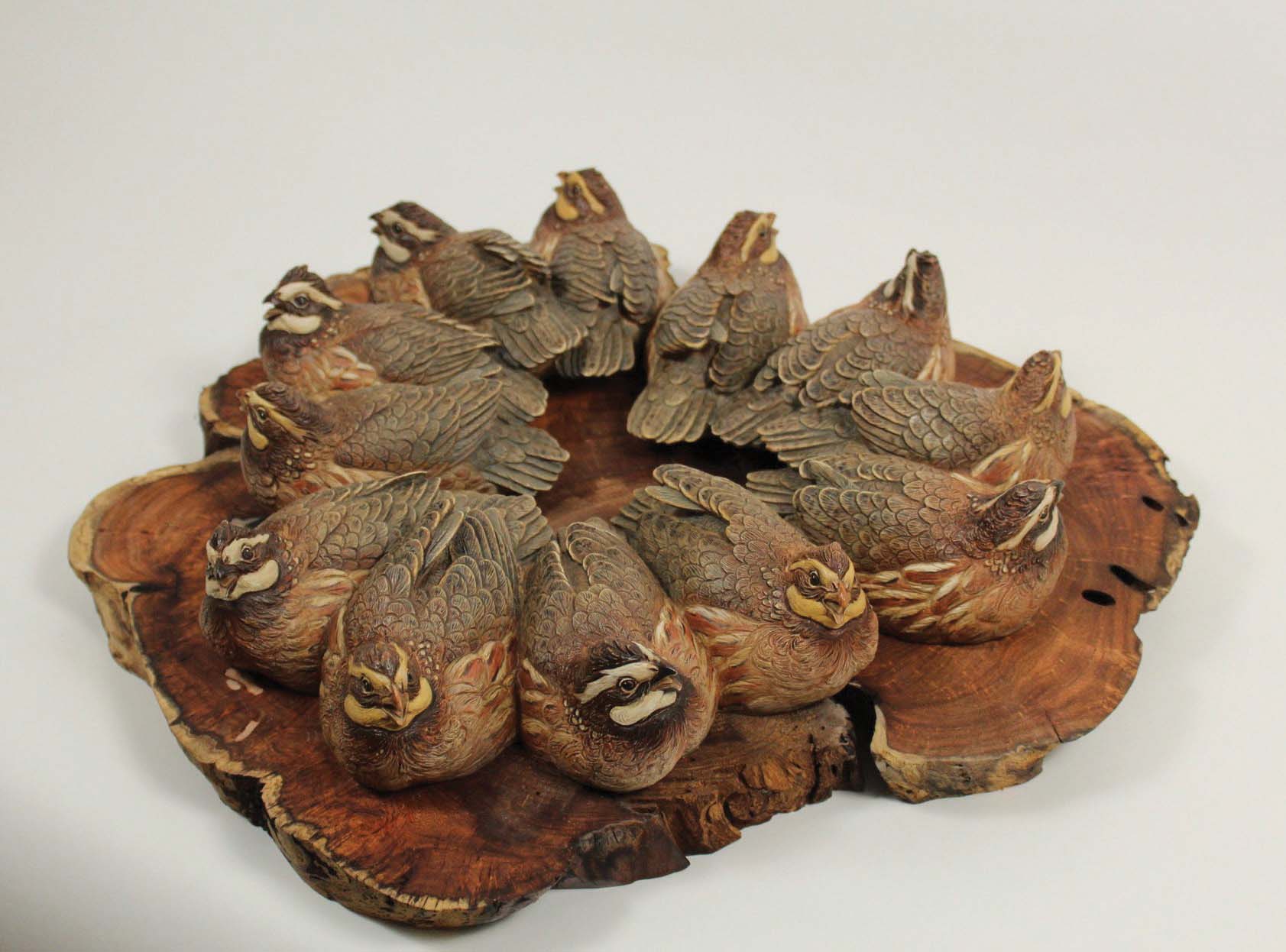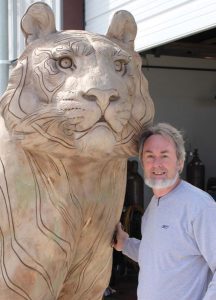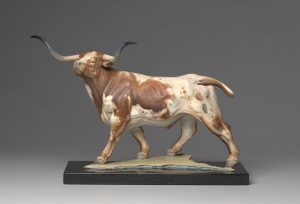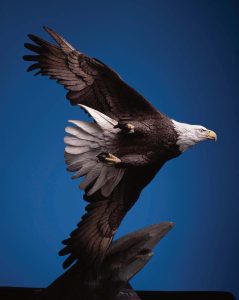
31 Oct ARTIST SPOTLIGHTS: BOB GUELICH
Bob Guelich’s monumental animal bronzes belong to the public, standing ready to be enjoyed and admired at zoos, botanical gardens, art museums, and college campuses nationwide. From a magnificent pride of lions that greets visitors at the San Antonio Zoo, not far from the sculptor’s home and studio, to a flock of great blue herons plucking fish from the water at the entrance to the San Antonio Botanical Gardens, to the 8-foot-tall tiger recently installed in front of the athletic center at Doane University in Crete, Nebraska, the artist’s work brings nature dramatically into view. A longtime member of the National Sculpture Society, which named him a Fellow, Guelich has stood at the top of his profession now for several decades.

So, it might become all too easy to overlook his smaller, tabletop works, sold to collectors in galleries or directly from his website. Near the Fence Line, for instance, presents the proud figure of a longhorn steer, with each piece in the edition of 35 available either with a patinaed bronze finish or individually polychromed, reflecting the simple fact that no two real-world longhorns look alike. “There was a study done on how many color variations there are,” he says. “The number is huge. I couldn’t believe it.”

Near the Fence Line | Polychromed Bronze | 11 x 17 x 6 inches
Guelich pays no less attention, though, to a subject as small and intimate as the covey of a dozen quail — six each of females and males — he features in Roosting Circle, an edition he limited to a dozen because he could only find that many near-identical cross-sections of a tree for the bases, not to mention the meticulous detailing of each bird’s eyes and every feather. “I could spend all day long just doing those,” he says with a laugh.
Guelich heard his artistic calling while in the U.S. Coast Guard, first on a search-and-rescue vessel out of San Francisco Bay and then on an icebreaker based in Kodiak, Alaska. That latter posting, he says, “was a godsend. I was a city boy, and the animals and birds it exposed me to were fantastic.” After serving, he found work in San Antonio making animal and figurative embossing dies for an art engraving company while painting a wide variety of subjects in his spare time, slowly gravitating toward animals and then transitioning into three dimensions. “I’d load my sculptures from the foundry into my VW van and call on potential collectors. One of them loved my work and wanted to collect number one, both polychromed and patinaed, of everything I did.”

Through the Cliffs | Polychromed Bronze | 28 x 19 x 13 inches
His career continued growing from there, through a sort of visual equivalent to word of mouth: Someone would see a piece, wonder who did it, and track him down. But, as Guelich quickly adds, even though he applies himself full-time to the creative process and supports himself and his family through those efforts, “Though I’ve only ever thought of it as a hobby, it’s somehow turned into a career.”
Guelich’s work is represented by Folger Galleries in Midland, Texas.
Based in Marin County, California, Norman Kolpas is the author of more than 40 books and hundreds of articles. He also teaches nonfiction writing in The Writers’ Program at UCLA Extension.






No Comments